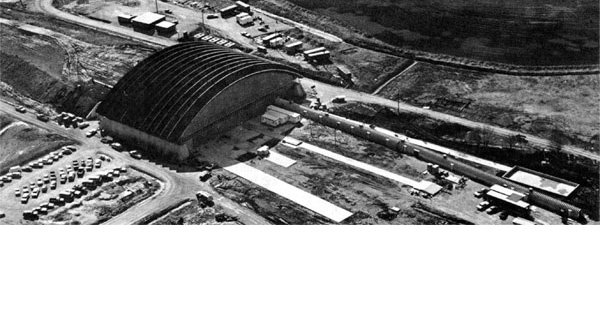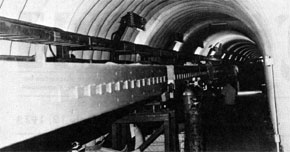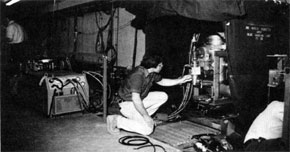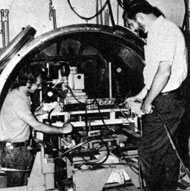Progress Continues in NAL Meson Area
The Meson Area recently finished "hosting" the Brookhaven-Yale quark search at NAL, one of the first searches for particles that were predicted by theories for some years and required the high energies of the NAL accelerator for experimental verification. The quark, for instance, was proposed in a conjecture by Murray Gell-Mann (who was also a member of the NAL Program Advisory Committee in 1973) and Yuval Ne'emen in 1961. According to their ideas, a particle with a fractional electrical charge, named the "quark" by Gell-Mann, could be used to understand the known sub-atomic particles such as mesons and protons, by considering these particles to be built up from quarks.
The experimental plans for Experiment #72 matched the plans to activate the M-4 Line of the Meson Section. Experimenters from the Brookhaven-Yale University collaboration installed their equipment on the M-4 Line and ran for 500 hours until completion on June 11. No quark was found in this first run, but a modest effort by the group continued. "They demonstrated again what has been found before - a measure of the rareness of quarks," according to Richard Lundy, head of the NAL Meson Section.
Experiment 75, another quark search, began in the Meson Area. Taiji Yamanouchi of NAL's Neutrino Section, was spokesman for the group, in collaboration with Tom Nash of NAL's Proton Section; David Nease, Cornell graduate student, and John Sculli of New York University. This group took data in May for the first phase of their plan; the second phase was completed in August, 1973.
The Meson Area provided locations for six relatively fixed beam lines, using beams of secondary particles, particles produced following the collision of the proton beam from the Main Accelerator with a metal target on the Meson Target train. These particles were typically mesons (medium-mass particles), although one of the six lines was a neutron particle beam and another a diffracted proton beam. Beam from the accelerator entered an 80 ft. Meson Target Box containing the tungsten target mounted in the array of equipment located on a 3-car target train. The six lines began at the target box and transported beams some 1400 ft. farther down the line to the Detector Building, each beam with certain characteristics. The six lines and their status in July 1973 was:
M1: A charged particle beam line stressing high intensity, with a 220 BeV energy limit at present, and provision for Cerenkov counters which tag the particles. Five experiments were approved for this line, plus one test.
M2: A charged particle beam of diffracted protons swept from the M3 neutral beam line and recombined to yield high momentum. Seven experiments were approved for this line including the NAL quark search.
M3: This line is a neutral beam from which all charged particles were removed. The neutron particles here were used by four experiments already approved.
M4: Also a neutral beam line, extending at an angle downward from the horizontal position of the other Meson Lines. M4 passed under the detector building into a tunnel on the north side of the building where experiments were installed. The large initial angle resulted in higher relative production of neutral kaon and neutron particles. Two experiments were scheduled here.
M5: A test line for the present.
M6: Divided into two branches - east and west. One utilized a single spectrometer, the other scattering equipment, both studied the effects of the secondary particles striking targets in the Meson Detector Building. The Single Arm Spectrometer was housed in a metal enclosure extending 600 feet from the north end of the Detector Building. Three experiments were approved for the M6 Line.
Headquarters for the Meson Area, located 1400 feet from the target, was the Detector Building. The arched roof of the 250' X 160' building was formed by C-shaped corrugated steel elements placed on one side and assembled in rows to form a striking scalloped effect on the exterior. The Detector Building housed controls for the main components of the Meson Lines as well as administrative offices, a 20-ton crane spanning the entire length of the building, and a vast array of experimental set-ups.
Administration of the Meson Section was headed by Dick Lundy, with assistance in liaison from Frank Ascolese, and Joyce Arado as secretary. Liaison physicists in the section were S. Ecklund, H. Haggarty, P. Koehler, E. Malamud, and A. Wehmann. The operations group was headed by R. Trendler. Engineering work was handled by R. Niemann, with Marie Nelson as secretary. The installation group was led by R. Kolar. Components for the Meson Lines were built by a group headed by J. Michelassi as supervisor. Beam line and experimental design was the work of T. Glowacki. U. Patel, and J. Satti.






